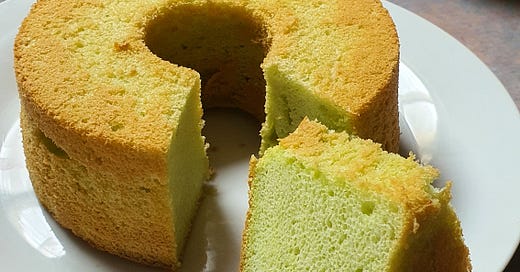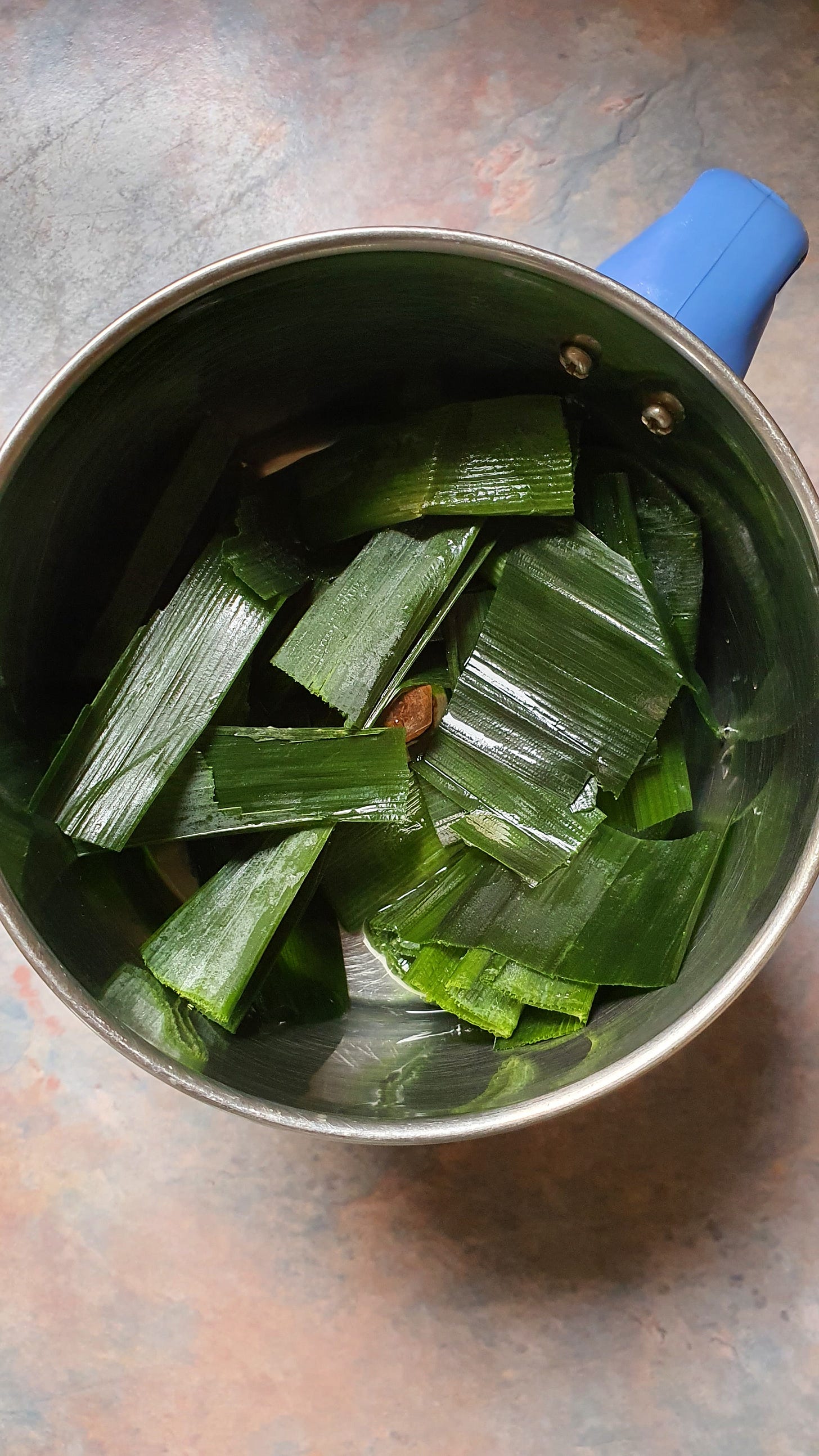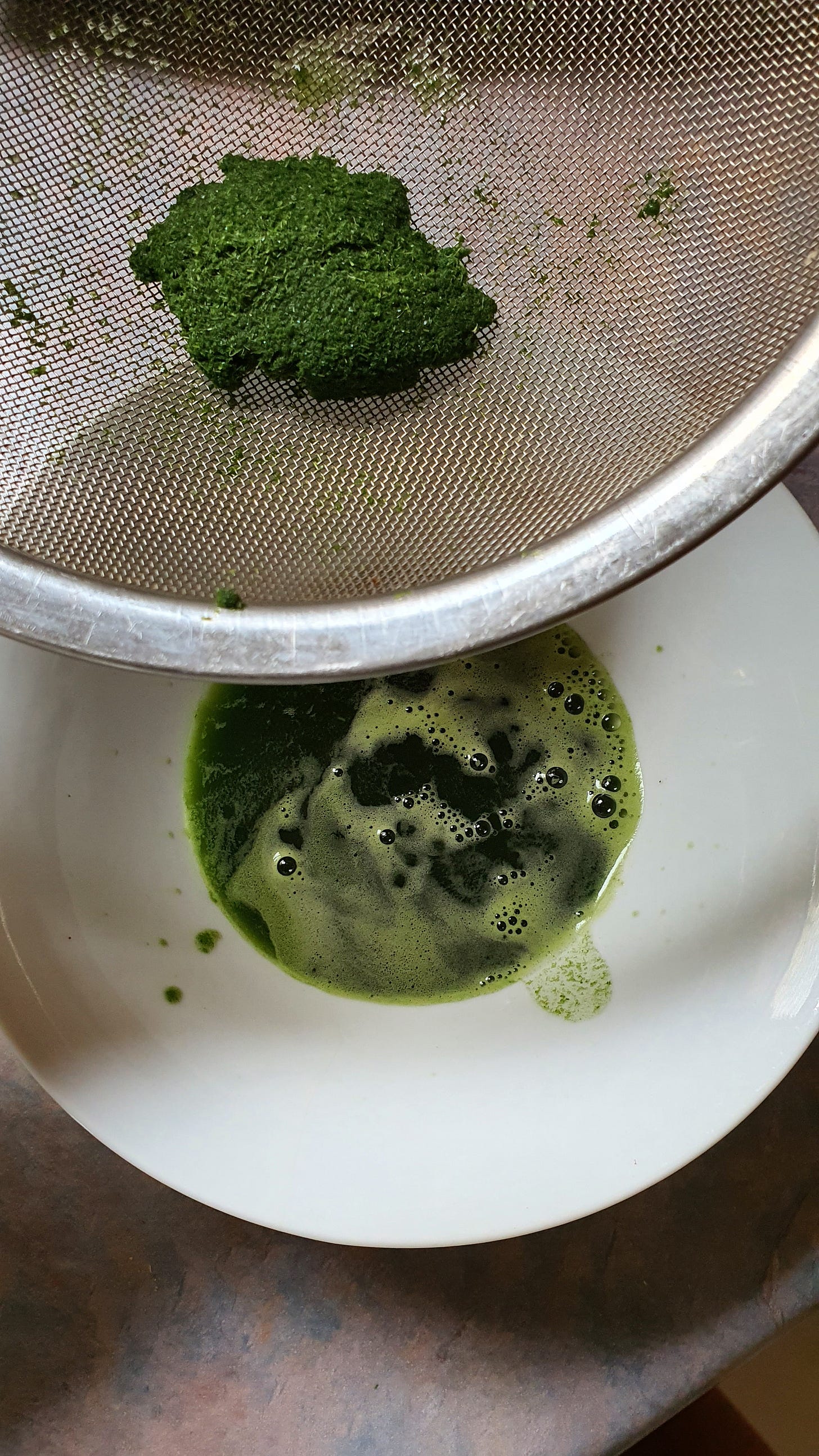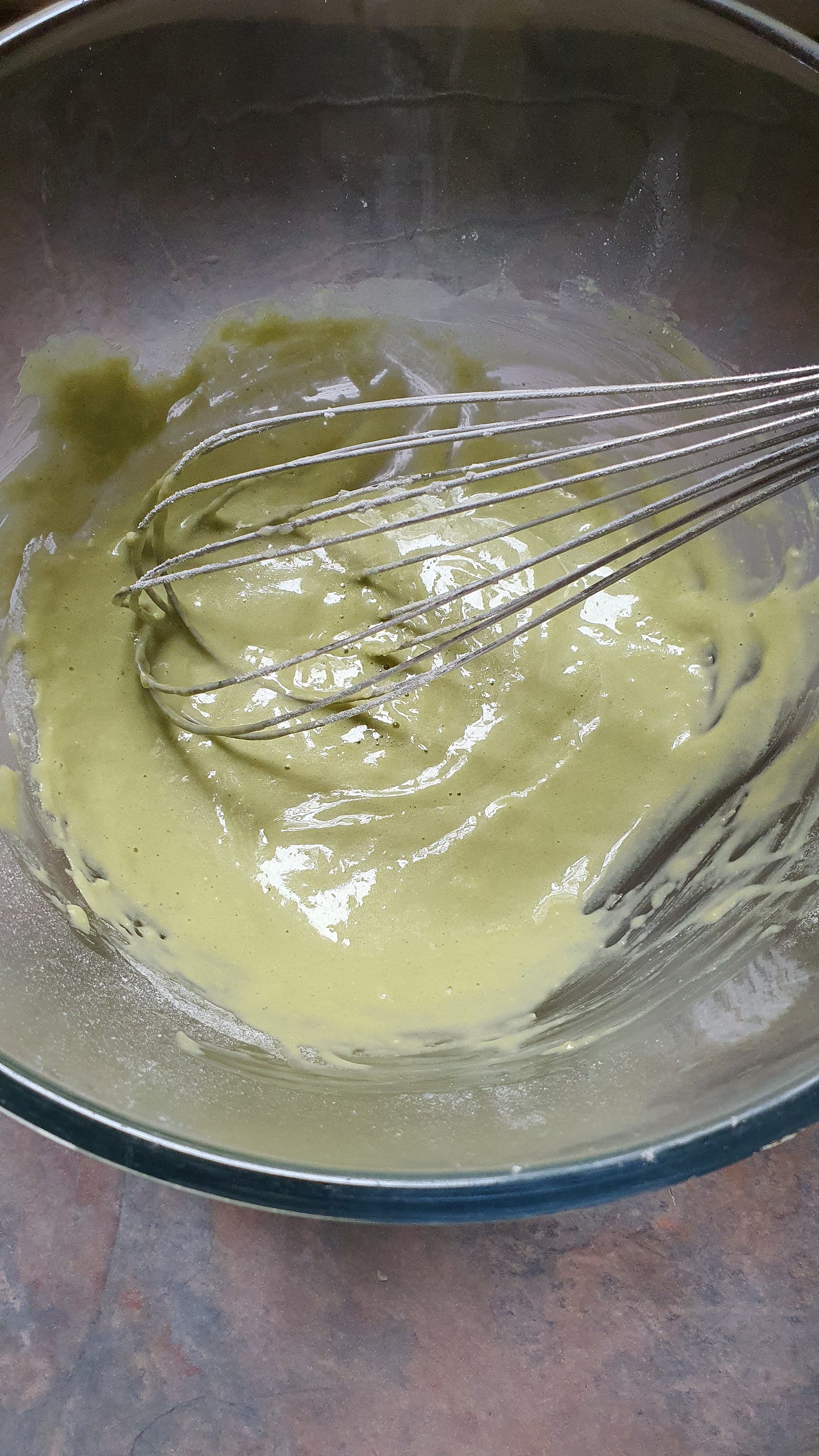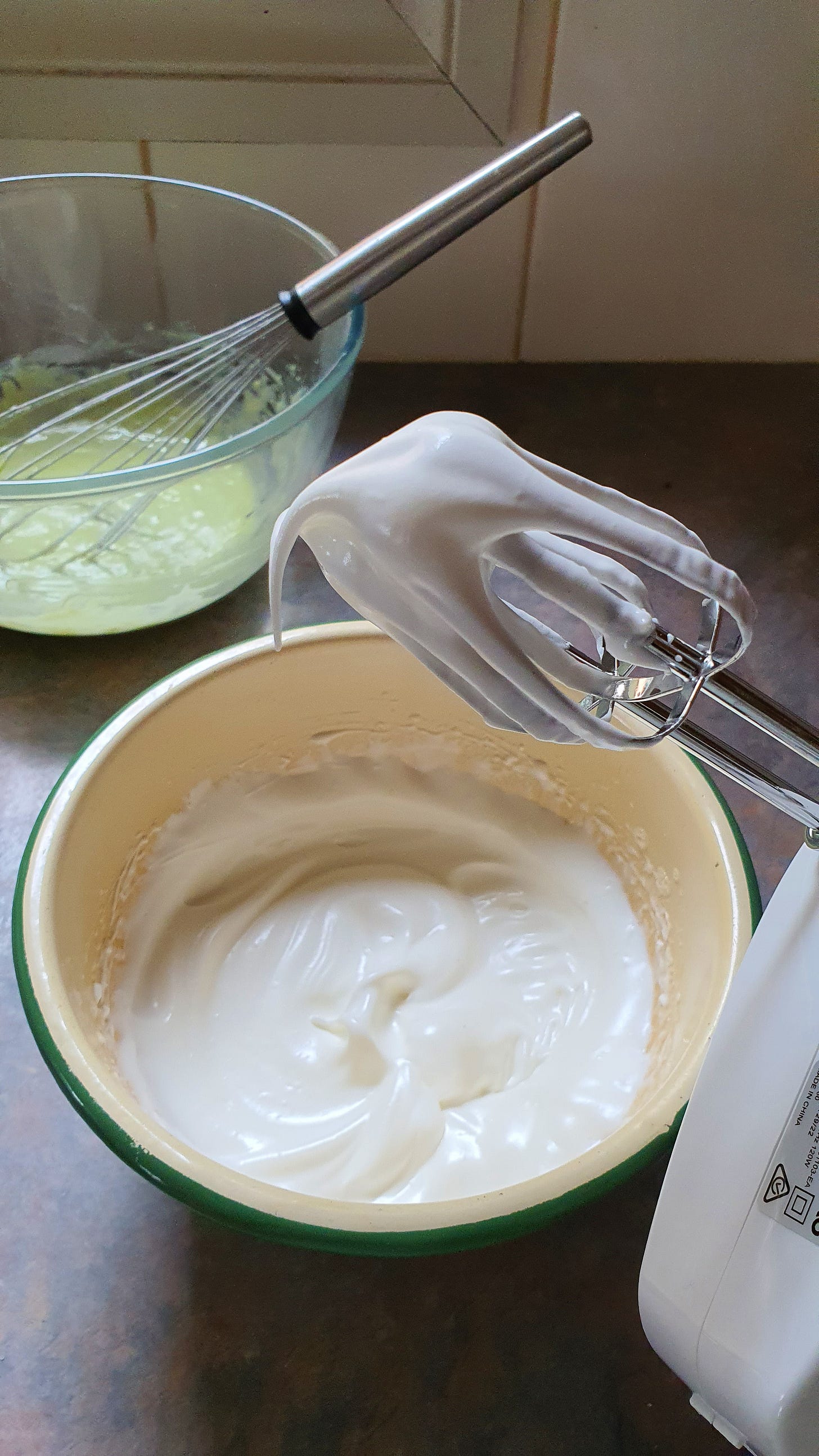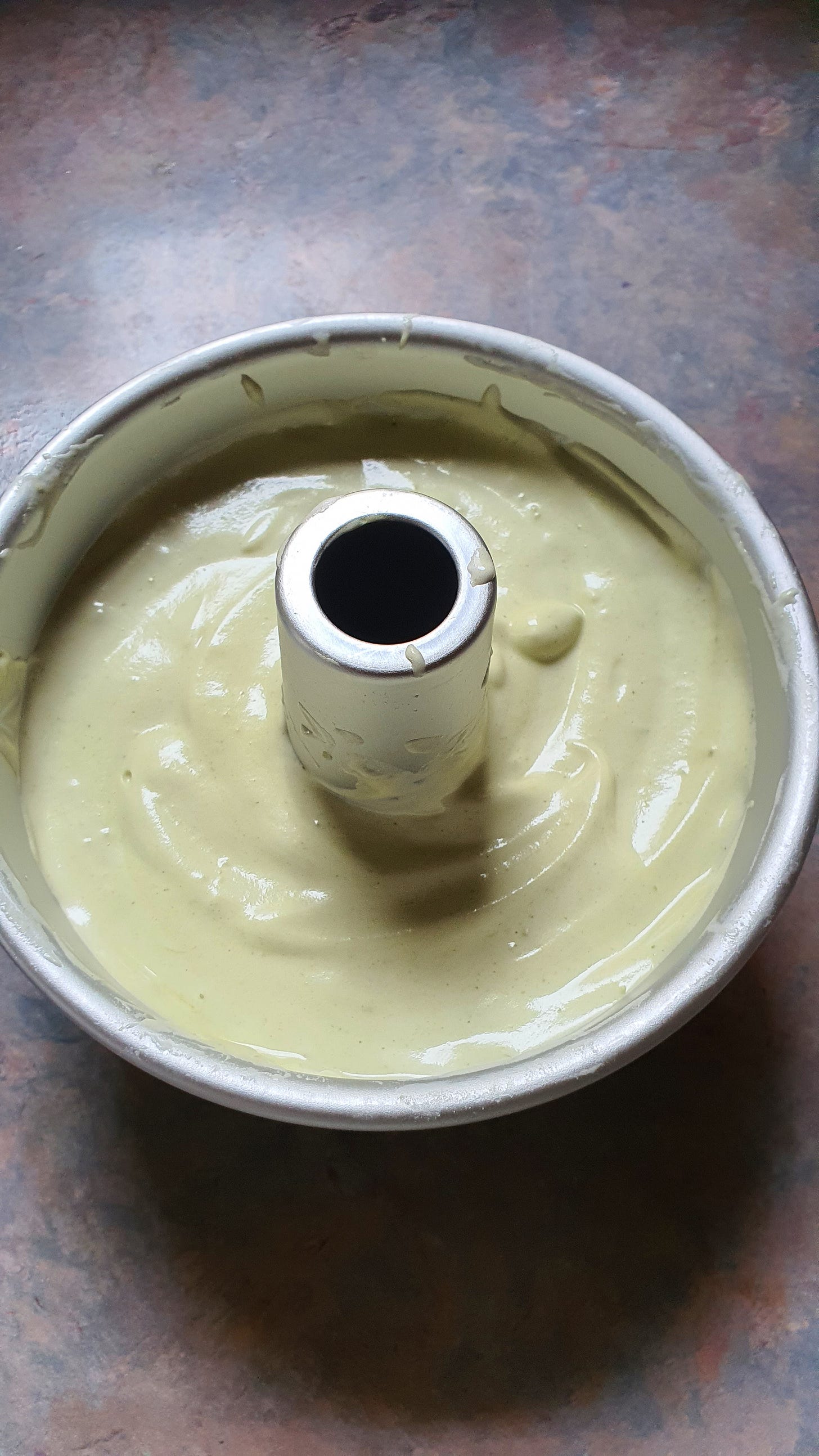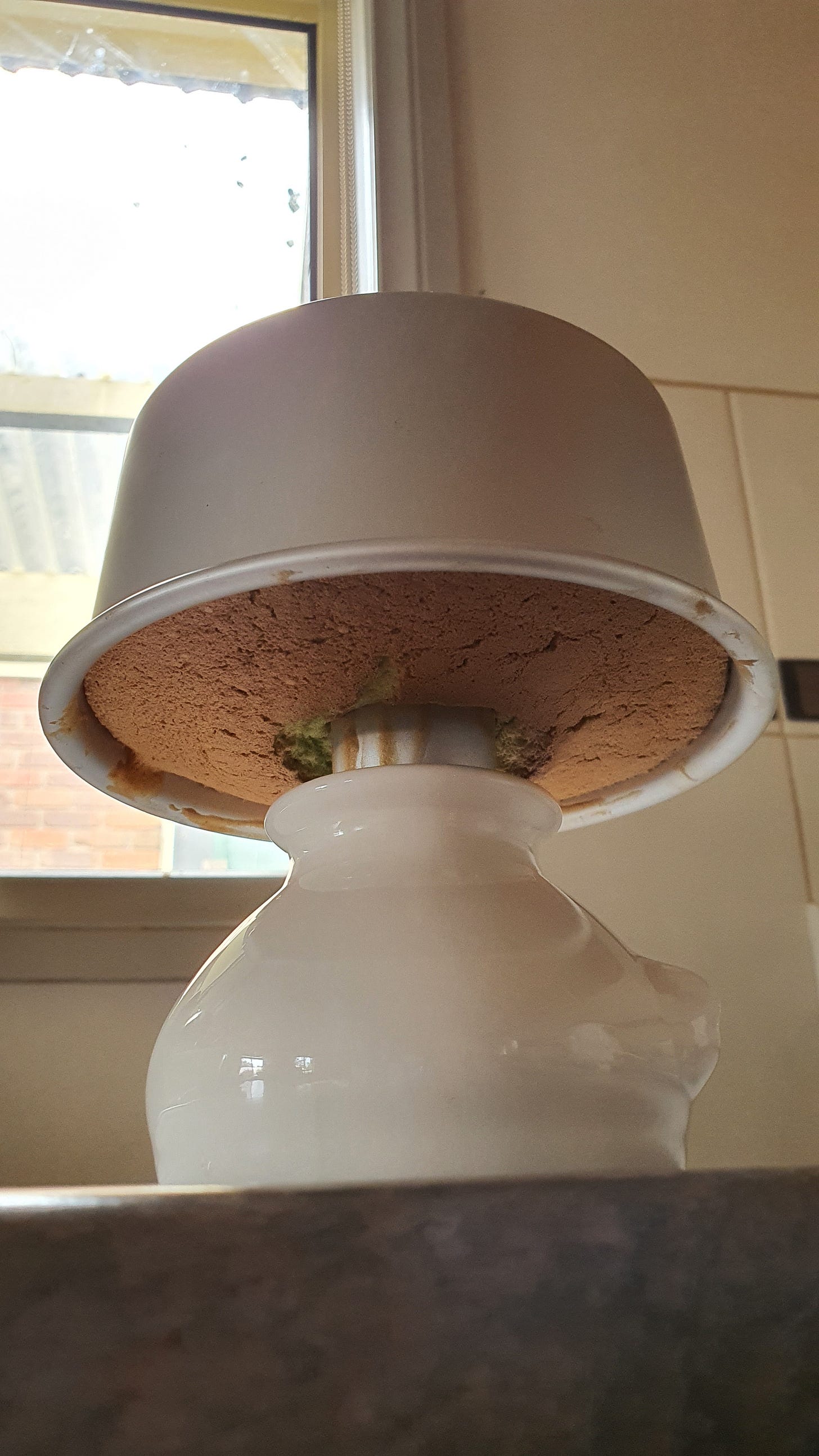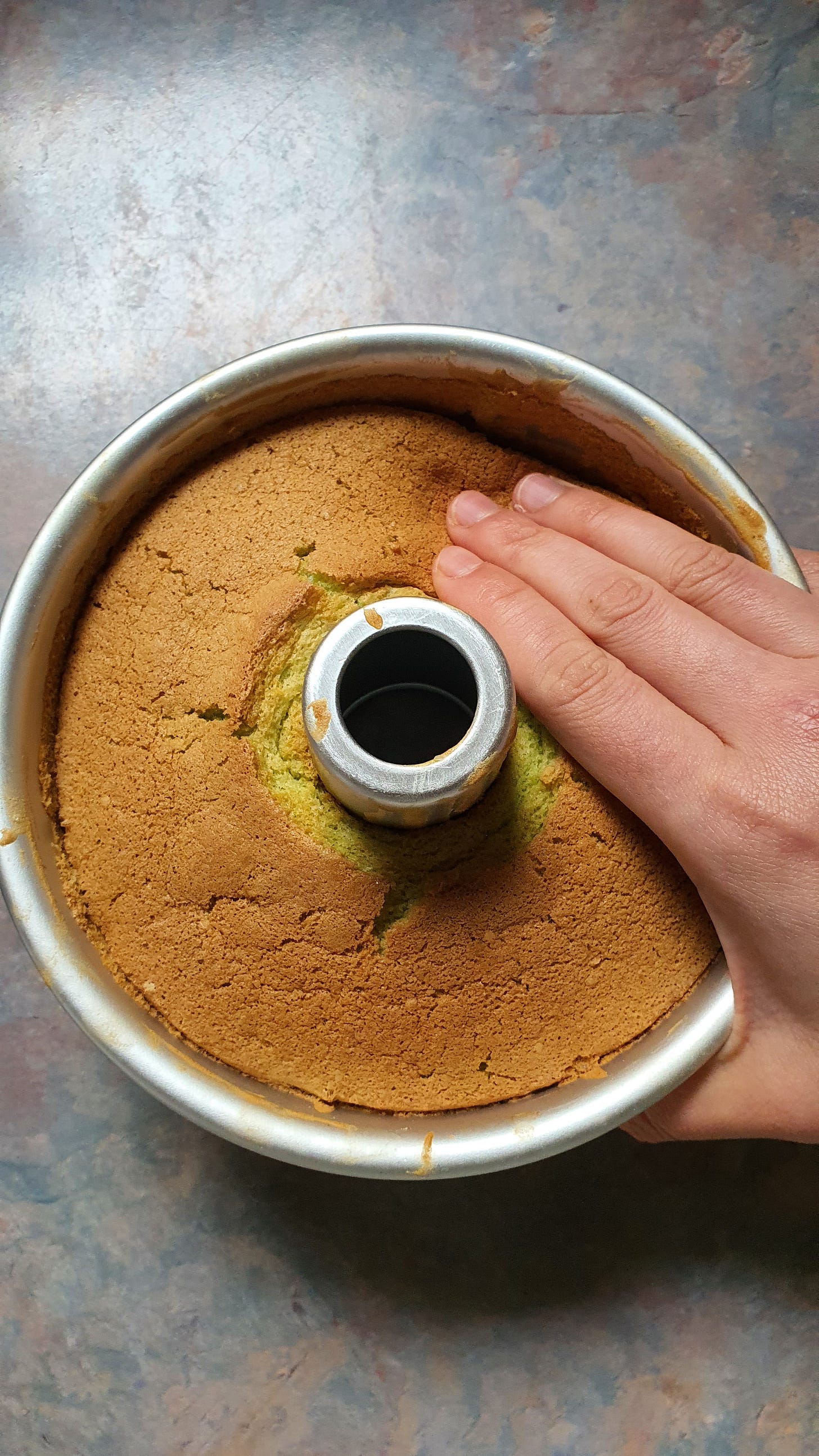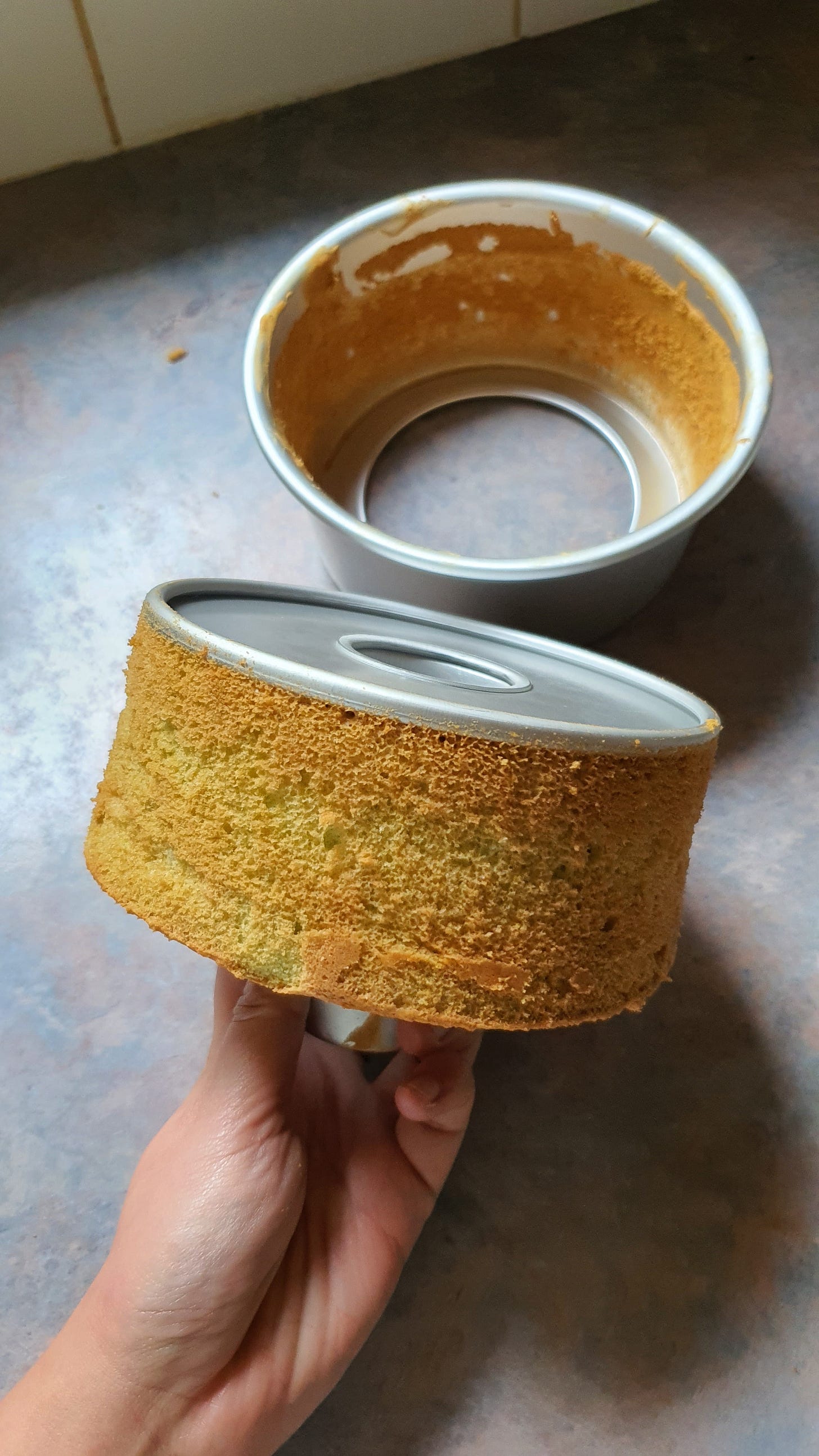✨ Welcome to Singapore Noodles, a newsletter dedicated to celebrating Asian culinary traditions and food cultures. Every Monday, you’ll be receiving a tasty mix of food history, stories, and recipes straight in your inbox. Archived recipes and other content can be found on the index. This newsletter is 100% reader-funded; each paid subscription supports the writing and research that goes into the newsletter, pays guest-writers, and gives you access to all content and recipes. Thank you for being here and enjoy this week’s post. - Pamelia ✨
It’s hard to imagine a more beloved cake than pandan chiffon cake in Singapore. When I grew up though, I never really liked chiffon cake. Whether it was in Singapore or overseas, the ones I’ve eaten were all kind of dry and rough. But there were two instances in my life where I’ve had expletive-level extraordinary chiffon cakes. The first was when I worked at Candlenut and my colleague Nani gave me a taste of the gula melaka chiffon cake he was working on. It was so soft, it jiggled like jello out of the mould. It literally was like eating a cloud. The second was when Qin Yi came to my book launch with a pandan chiffon cake from a neighbourhood bakery called 51 fiveone degrees.
The emergence of really good chiffon cakes of late reminds me of kueh salat - the average shopbought version I grew up with was kind of ordinary and pedestrian, but it has really had quite a glow-up in recent years, with more sellers treating it like the artisanal product it is meant to be, so that it becomes something truly noteworthy.
Shopbought, mass-produced pandan cakes tend to be made with artificial pandan extract, producing a neon green I find absolutely ghastly. I much prefer using fresh pandan leaves. Many recipes call for grinding pandan with the coconut milk component of the recipe. While it works, I find that when you blend the pandan and coconut milk for too long (particularly when you are using a weak blender or are living in a tropical climate), the heat generated from the blender can cause the coconut milk to split somewhat, resulting in a noticeably off aftertaste. So what I do is to grind my leaves with water, and mix it with coconut cream instead.
The pandan-coconut mixture is mixed with salt, oil, cake flour, and baking powder. Just a note on each of these ingredients. Salt: I always add salt to most desserts that I make (the only exception is probably Chinese dessert soups) - salt just brings out the flavours and tempers the sweetness. The difference that salt makes is sometimes so obvious that I can tell when a dessert has no salt in it. Oil: you might be prone to add melted butter instead, but cakes made with oil tend to be more moist in my opinion. Cake flour: This is basically a flour of low protein content, which will form less gluten in the cake batter, and hence will give you a more tender crumb. You could use a mix of plain flour and cornflour in a pinch. Baking powder: While not completely necessary, I find that you get a spongier texture with baking powder.
With the cake flour and baking powder, I sift them beforehand so that they are aerated and lump-free.
Now for the key element of chiffon cakes, the whites. How the egg whites are beaten can make or break the cake. Though it does take more time, I lower the mixing speed at the end so that I get tiny, evenly-sized bubbles. It almost looks like velvety cream. You want to whip it to medium-stiff peaks, not stiff peaks. The reason for that is that if the egg whites are whipped to as stiff as they can go, the bubbles in the whites are not given anymore room to expand in the oven, affecting rise. To test, the eggs should not slide around in the bowl when the bowl is flipped. But, when you lift your whisk, they should form slightly droopy, hooked peaks.
I fold in a third of the egg whites first to lighten the batter, then the rest gently. You absolutely need a proper chiffon cake tin to bake chiffon cake. It should: 1. Have a funnel in the centre. The funnel is crucial for heat circulation, and allows the cake to adhere and not fall apart in the centred when you flip it upside down to cool. 2. NOT be non-stick. If the cake is coated, the batter is unable to climb the side of the pan as it expands, and it bakes. For this same reason, do not use parchment or grease the sides of the tin.
With baking, it is difficult to give a precise duration, but I’d recommend to err on the side of overbaking. If chiffon cake is underbaked, it will fall out of the tin when cooling, or it will collapse and you will get a dense cake. Overbaked cakes can be a little dry.
Because chiffon cakes are delicate and can collapse when the oven door is open too early, I make sure that I can smell the cake before even opening the door. Once it is time to check on it and I can smell it, I test the cake quickly by touching the top lightly. If I hear the sound of uncooked foam, or if the cake does not spring back but forms dents to my touch, I let it bake a while longer. Once the cake springs back, I test it with an inserted skewer, and if it comes out clean, I take it out of the oven.
Ideally, at this point, the cake smells absolutely fragrant, is nicely browned, but still is soft and spongy. Once out of the oven, the cake has to be flipped over immediately to cool; gravity pulls the top of the upside down cake downwards, so that it does not deflate until the delicate foam structure within is completely set. Some people say cool the cake overnight but I feel like freshly baked cake is the best. The cake is safe to unmold when it no longer feels fragile. The tin might feel a teeny bit warm but that’s ok.
Removing the cake from the tin takes some care because it is such a delicate cake. Lots of people say to use a knife but I prefer not to, because you risk damaging the pretty brown exterior of the cake. The technique that I use is this one, where you press the cake with your fingers, essentially peeling it off the cake tin. It works so well because if you baked your chiffon cake correctly, it should be like as soft and flexible as a sponge! If you do choose to use a knife though, make sure to get as close to the pan as possible to retain as much of the crust as you can.
The first bite of this cake took me back to Singapore, to the two specific memories. It is soft as a cloud, so fragrant, a beautiful jade green, and the salt just takes it to the next level… I kind of regret not making a bigger cake. Now I can strike it off my ‘I can make it myself, don’t have to buy anymore’ list! Also, a final note: good chiffon cake is so moist that it does not need any soak/ cream/ coulis/ sauce/ syrup. Good on its own!
Pandan chiffon cake
Makes a 6” cake (I tested this cake with a small 6” tin because it’s just the two of us at home. If you have a bigger tin, feel free to multiply the recipe, but exercise your own judgment with the baking duration.)

